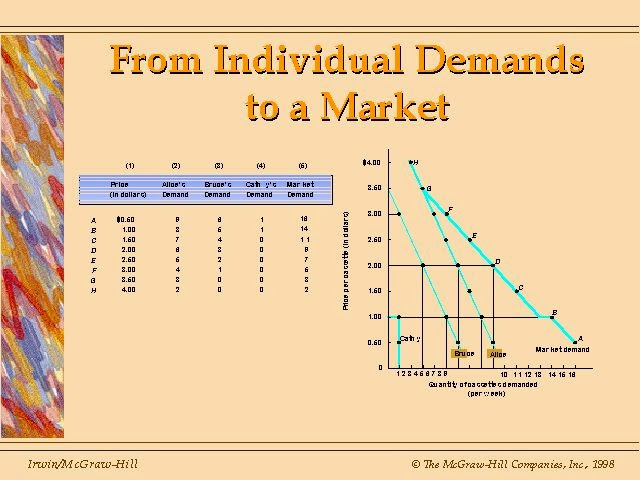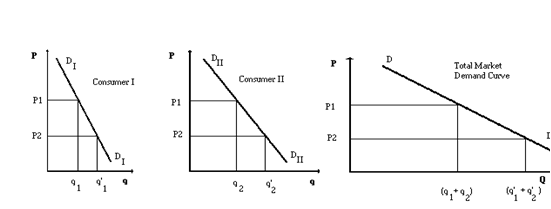Individual demand refers to the quantity of a good or service that a specific person is willing and able to purchase at a given price, while market demand refers to the total quantity of a good or service that all consumers in a given market are willing and able to purchase at a given price.
There are several key differences between individual demand and market demand.
First, individual demand is determined by the preferences, income, and other factors of a single consumer, while market demand is determined by the preferences, incomes, and other factors of all consumers in the market. This means that individual demand may be influenced by a variety of factors such as personal taste, personal financial situation, and the availability of substitutes, while market demand is influenced by the aggregate of all of these factors for all consumers in the market.
Second, individual demand is a microeconomic concept, while market demand is a macroeconomic concept. This means that individual demand focuses on the behavior of a single consumer or a small group of consumers, while market demand focuses on the behavior of all consumers in a given market.
Third, individual demand is often represented by a downward-sloping demand curve, which shows the relationship between the price of a good or service and the quantity of that good or service that an individual is willing and able to purchase. Market demand, on the other hand, is represented by the sum of all individual demand curves in a given market, which results in a market demand curve that slopes downward as well.
Overall, while individual demand and market demand are closely related, they are distinct concepts that help economists understand the behavior of consumers and the forces that shape the demand for goods and services in a market.







